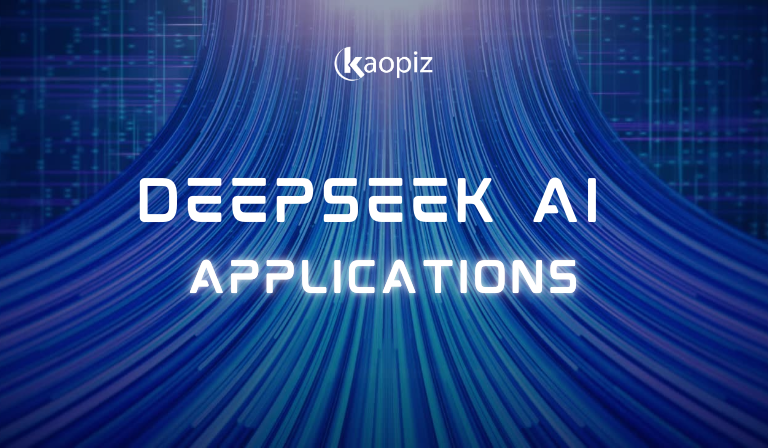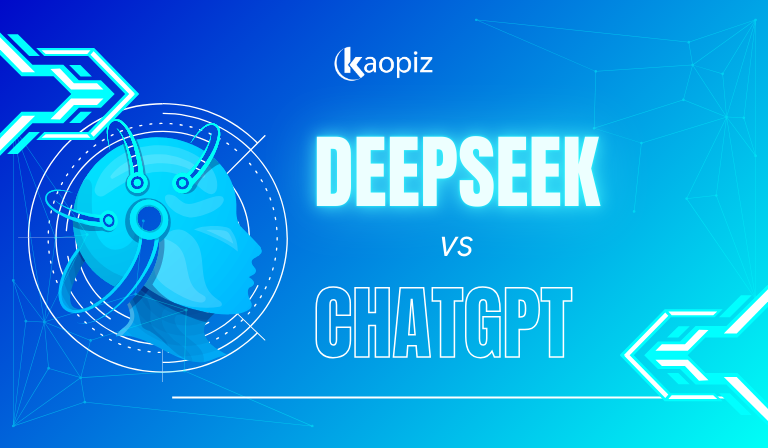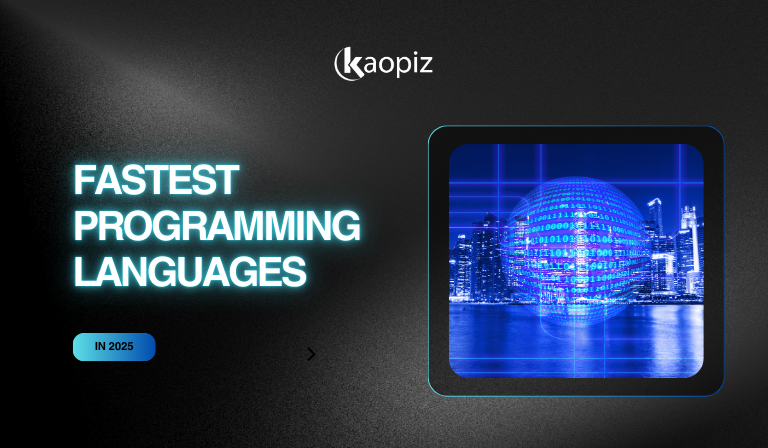Deep Learning vs Machine Learning: Key Differences & Use Cases
Artificial Intelligence (AI) is transforming industries, with Machine learning (ML) vs deep learning (DL) playing key roles in automation, data analysis, and decision-making. While both are subsets of AI, they differ in how they process data, learn from it, and make predictions.
In this blog, we’ll break down the key differences between deep learning vs machine learning, their real-world applications, and how businesses can choose the right approach for their needs. Let’s dive in!
Table of Contents
- What is Machine Learning?
- What is Deep Learning?
- Key Differences Between Deep Learning vs Machine Learning
- Data Requirements
- Feature Engineering
- Computational Power & Traning Time
- Interpretability and Explainability
- When to Use Machine Learning vs. Deep Learning?
- Future of Machine Learning and Deep Learning
- AI, Deep Learning & Machine Learning Solutions by Kaopiz
- Conclusion
- FAQs
What is Machine Learning?
Machine learning is a subset of AI that enables computers to learn from data and improve their performance on tasks without explicit programming. Instead of following fixed instructions, ML models identify patterns in data and make predictions or decisions based on past experiences. This allows businesses to automate processes, analyze large datasets, and optimize decision-making.
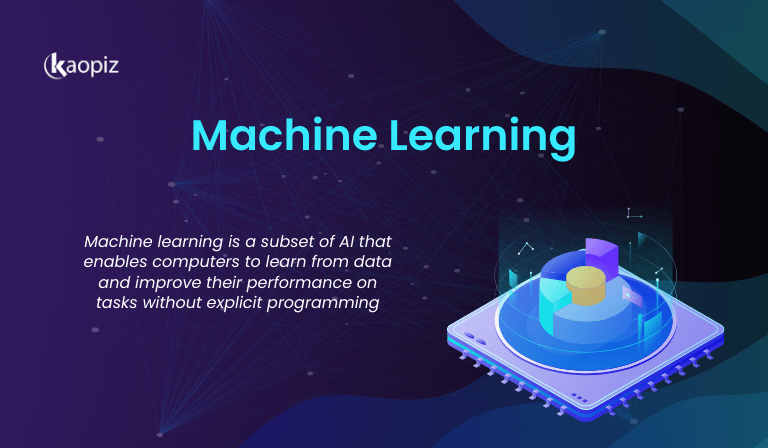
ML algorithms are widely used across industries. For example, e-commerce platforms use ML to recommend products based on customer behavior, while banks apply it to detect fraudulent transactions in real time. In healthcare, ML helps predict diseases by analyzing patient records, and in marketing, it powers personalized advertising campaigns.
There are three main types of machine learning: supervised learning, unsupervised learning, and reinforcement learning. In supervised learning, models learn from labeled data to predict outcomes, such as identifying spam emails or recommending products. Unsupervised learning helps uncover hidden patterns in unlabeled data, commonly used in customer segmentation and fraud detection. Reinforcement learning enables systems to learn through trial and error, like AI-powered robots optimizing warehouse logistics or self-learning game algorithms.
What is Deep Learning?
Deep learning is a specialized subset of machine learning that uses artificial neural networks (ANNs) to mimic the way the human brain processes information. Unlike traditional ML models, which rely on structured data and feature engineering, deep learning models automatically learn patterns from large amounts of unstructured data, such as images, audio, and text. This makes deep learning highly effective for complex tasks like image recognition, natural language processing, and autonomous driving.
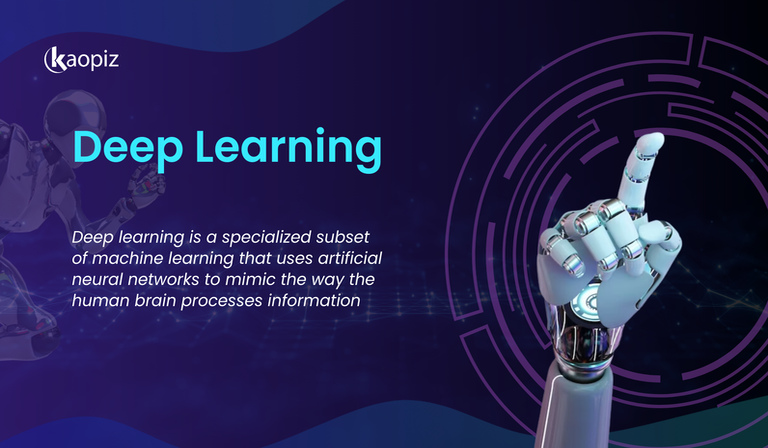
Deep learning models are built using multiple layers of interconnected neurons, known as deep neural networks. These networks can automatically extract important features from raw data, eliminating the need for manual intervention. For example, deep learning powers facial recognition in smartphones, enables virtual assistants like Siri and Google Assistant to understand speech, and helps self-driving cars detect obstacles in real time.
As businesses generate and process massive datasets, deep learning has become a key driver of AI innovation. From automating medical diagnoses to improving fraud detection in finance, deep learning enables organizations to leverage AI for more sophisticated and accurate decision-making.
Key Differences Between Deep Learning vs Machine Learning
After walking through what is deep learning vs machine learning, in this part, let’s investigate the significant differences between the two techniques.
Data Requirements
One of the biggest differences is the amount of data required for effective model training. Machine learning models can perform well with smaller, structured datasets, especially when combined with feature engineering. For example, a fraud detection system using machine learning can analyze thousands of labeled transactions to identify suspicious activity.
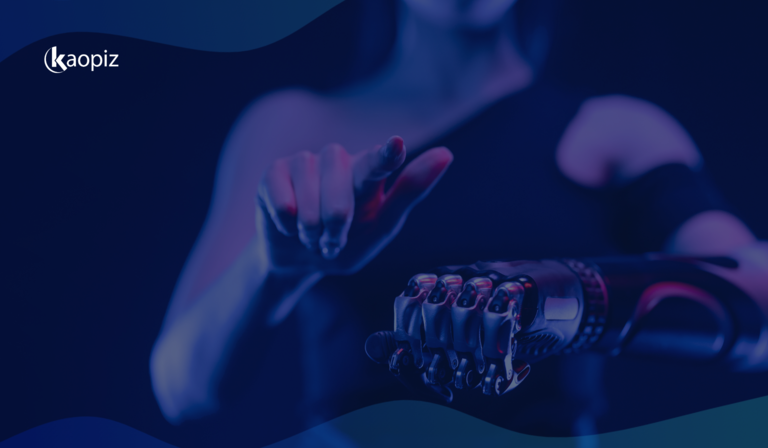
In contrast, deep learning models require large volumes of data to achieve high accuracy. Since deep neural networks automatically learn features from raw data, they need millions of examples to recognize patterns effectively. For instance, training an AI-powered image recognition system requires vast datasets containing millions of labeled images to accurately classify objects. Without sufficient data, deep learning models may struggle with performance and produce unreliable results.
Feature Engineering
In machine learning, human experts must manually select important features from data to help the model make accurate predictions. For example, in a customer churn prediction model, analysts might choose features like purchase history and customer activity to train the system effectively. This process requires domain knowledge and structured data.
Deep learning, on the other hand, automatically learns features from raw data without human input. Neural networks extract patterns from images, text, or speech without needing predefined rules. For instance, in facial recognition, deep learning models detect edges, shapes, and facial structures on their own, making them ideal for handling complex, unstructured data.
Computational Power & Training Time
Machine learning requires less computational power and trains faster because it works with structured data and simpler algorithms. Many machine learning models, like decision trees or linear regression, can be trained in minutes or hours using a standard computer. This makes machine learning more practical for businesses that don’t have access to advanced hardware.
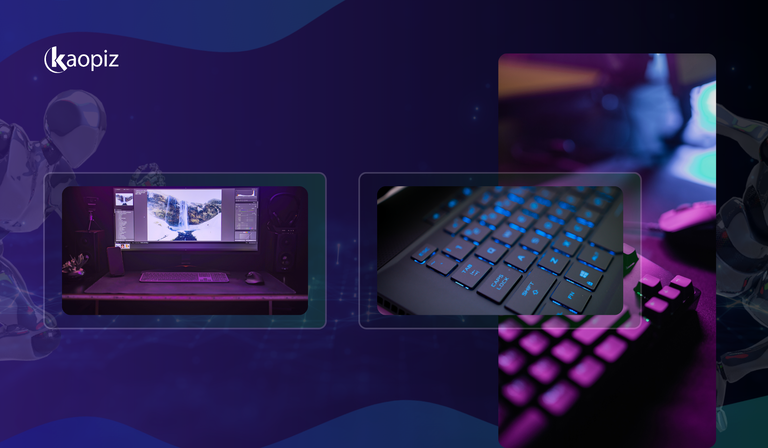
However, deep learning requires more computational power and longer training times compared to traditional machine learning. Since deep learning models process large datasets and complex neural networks, they often need powerful GPUs (Graphics Processing Units) to handle calculations efficiently. For example, training a deep learning model for self-driving cars can take days or even weeks.
Interpretability and Explainability
One major deep learning vs machine learning difference is how easily we can understand and explain their decisions. Machine learning models are generally more interpretable, meaning we can see how they make predictions. For example, in a loan approval model using decision trees, we can trace the decision path to understand why a loan was approved or denied. This transparency is crucial in industries like finance and healthcare, where explainability is required for regulatory compliance.
In contrast, deep learning models are often seen as black boxes because they have many layers of neurons that process data in complex ways. It’s difficult to understand exactly how a deep learning model reaches a decision, such as why it classified an image a certain way. While techniques like SHAP (Shapley Additive Explanations) and LIME (Local Interpretable Model-agnostic Explanations) can help make deep learning more interpretable, its complexity remains a challenge, especially in high-stakes applications.
To help businesses choose the right approach based on their needs, we create a table providing a clear and easy-to-understand comparison between deep learning vs machine learning.
| Feature | Machine Learning | Deep Learning |
|---|---|---|
| Definition | A subset of AI that enables computers to learn from data using algorithms. | A specialized subset of ML that uses neural networks to process complex data. |
| Data Requirement | Can work with smaller, structured datasets. | Requires large amounts of data for accurate results. |
| Feature Engineering | Requires human effort to select and optimize data features. | Automatically extracts features from raw data. |
| Computational Power | Can run efficiently on standard CPUs. | Requires high-performance GPUs or TPUs for training. |
| Training Time | Faster training, often in minutes or hours. | Longer training time, often taking days or weeks. |
| Interpretability | More explainable; decision-making can be understood. | Often a “black box”; difficult to interpret without special techniques. |
| Outputs | Usually a numerical value, such as a score or a classification. | Can produce various outputs, including text, images, scores, or sounds. |
When to Use Machine Learning vs. Deep Learning?
Choosing between machine learning vs deep learning depends on factors like data availability, computational resources, and the complexity of the task. Below are key considerations for each approach:
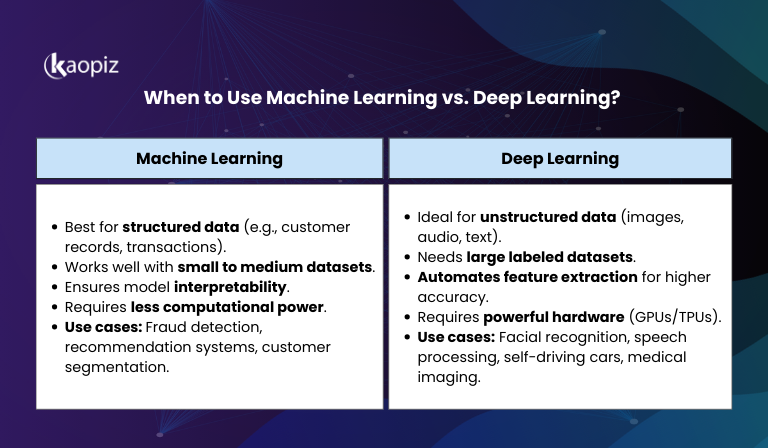
If your goal is to build a practical and cost-effective model that is easy to interpret, machine learning is often the better choice. However, if you need high accuracy and can invest in computational resources, deep learning provides powerful capabilities for complex AI tasks.
Future of Machine Learning and Deep Learning
The future of machine vs deep learning is shaped by advancements in automation, explainability, and computing power. As AI continues to evolve, both fields will become more efficient and widely adopted across industries:
AI, Deep Learning & Machine Learning Solutions by Kaopiz
Both machine learning and deep learning offer powerful capabilities, but choosing the right approach depends on your business needs and available resources. Regardless of the method, choosing a company with great AI system development process is crucial for success.

At Kaopiz, we leverage AI, machine learning, and deep learning technologies to deliver cutting-edge AI solutions that drive automation, enhance data processing, and improve business efficiency. Our AI services cover a broad range of industries, from document processing to advanced generative AI applications.
AI Solutions Offered by Kaopiz
Generative AI Solutions
OCR (Optical Character Recognition) Solutions
Beyond pre-built AI models, we offer custom AI solutions tailored to your specific requirements. Whether you need to develop a new AI model or integrate AI into your existing systems, Kaopiz provides end-to-end solutions to help businesses unlock the full potential of artificial intelligence.
AI Development Process at Kaopiz
We follow a structured approach to ensure the successful development and integration of AI solutions:
Kaopiz’s AI solutions empower businesses to automate workflows, enhance decision-making, and improve operational efficiency. Whether you need OCR automation, generative AI, or advanced data analytics, our team delivers innovative and scalable AI solutions tailored to your needs.
Conclusion
Both machine learning and deep learning play crucial roles in the advancement of AI-driven solutions, each with its own strengths and use cases. Machine learning is well-suited for structured data and tasks requiring explainability, while deep learning excels in processing large datasets and handling complex problems like image and speech recognition.
Choosing between ML and DL depends on factors like data availability, computational resources, and business objectives. Regardless of the approach, leveraging AI can drive efficiency, automation, and innovation across industries.
Interested in exploring how AI can transform your business? Contact Kaopiz today to discover tailored AI solutions that meet your unique needs.
FAQs
What Is an Example of Machine Learning That is Not Deep Learning?
An example of machine learning that is not deep learning is a spam email filter. It uses algorithms like logistic regression or decision trees to classify emails as spam or not based on predefined features, without requiring deep neural networks.
What Are the Similarities Between Deep Learning vs. Machine Learning?
Both deep learning and machine learning are subsets of AI and focus on training models to learn from data and make predictions. They both use algorithms to recognize patterns, improve over time, and automate decision-making processes. However, DL uses neural networks to process complex data, while ML relies on structured data and feature engineering.
Is ChatGPT a Deep Learning Model?
Yes, ChatGPT is a deep learning model based on transformer neural networks, specifically GPT (Generative Pre-trained Transformer). It uses deep learning techniques like natural language processing (NLP) to understand and generate human-like text.
Trending Post
